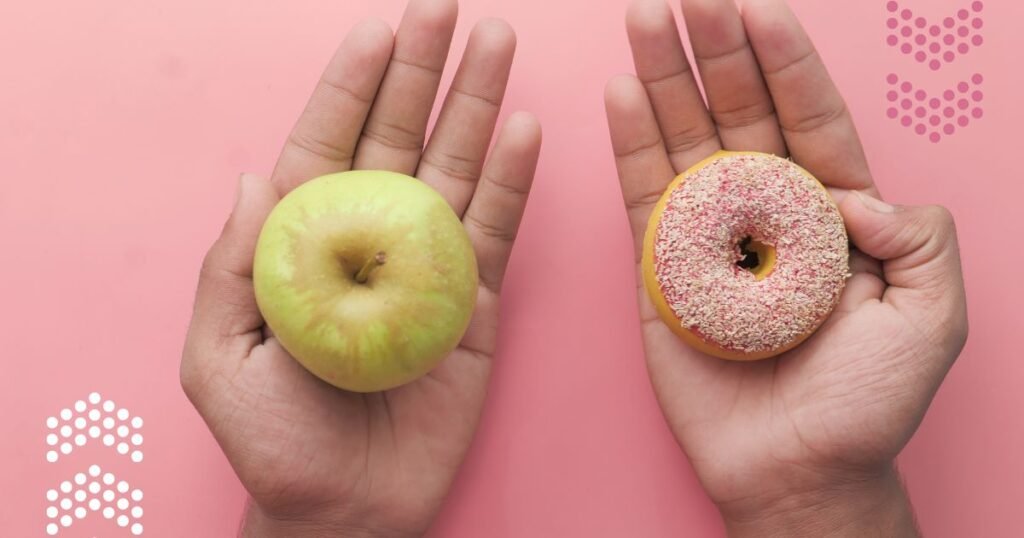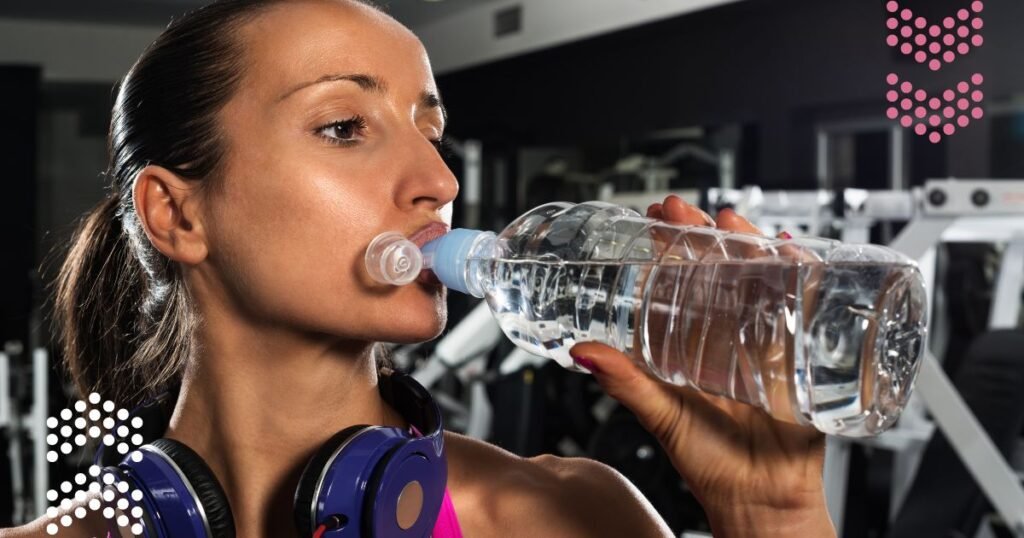Common Mistakes Women Make When Calculating Their Caloric Needs
Understanding your caloric needs is a critical part of any weight loss journey, especially for women. Each woman’s body is unique, and therefore, calculating the right caloric intake should be a personalized process. However, many women unknowingly make mistakes when determining how many calories they need to consume. These errors can slow down progress or lead to frustration. In this article, we’ll cover common mistakes women make when calculating their caloric needs and provide solutions to ensure you’re on the right track.
By avoiding these pitfalls, you can set yourself up for success, stay on track with your goals, and prevent feelings of discouragement. Whether you’re just starting your weight loss journey or looking to refine your approach, the key is understanding the intricacies of calorie counting.
1. Relying on a One-Size-Fits-All Formula
Why Generic Formulas Don’t Work
One of the biggest mistakes women make is using a generic formula or calculator to determine their caloric needs. These online tools often provide broad estimates based on height, weight, and age, but they don’t account for more individual factors like muscle mass, activity levels, or metabolic rate.
Women who follow these generalized guidelines may end up consuming too few or too many calories. For example, a highly active woman will require more calories than someone who is sedentary, yet both may receive the same recommended calorie intake based on basic information.
How to Avoid This Mistake
The solution is to use calculators that allow for more customized inputs, such as body composition, muscle mass, and activity levels. Additionally, consider working with a health or fitness professional who can provide a more accurate and personalized approach.
Understanding your specific needs can help you avoid the frustration of slow progress, burnout, or even potential weight gain caused by miscalculating your calories. The correct approach to calculating caloric needs is essential for achieving weight loss success.
2. Overestimating Activity Levels
Why Overestimating Activity Levels is a Problem
Overestimating your activity level is another common error. Many women assume they are more active than they actually are, leading them to consume more calories than their body needs. This is especially true for those who engage in moderate exercise but lead a sedentary lifestyle for the rest of the day.
The problem with overestimating your activity is that it inflates your calorie requirements, causing you to eat more than necessary. This can stall weight loss or even lead to weight gain, despite your efforts in the gym.
How to Accurately Assess Your Activity Level
To get an accurate idea of your activity level, consider investing in a fitness tracker or using apps that monitor your daily steps, workouts, and overall activity. These tools give you a clearer picture of how much you’re really moving throughout the day. It’s also important to understand the different activity levels—sedentary, lightly active, moderately active, and very active—so you can better identify which category you truly fall into.
Being honest with yourself about how much exercise you’re doing will help you better manage your caloric intake and avoid unnecessary overeating. You can also learn more about activity levels and their effect on caloric intake to further personalize your fitness plan.
3. Not Adjusting Caloric Needs Over Time
The Importance of Regular Recalculation
As your body changes, so do your caloric needs. When you first start losing weight, your body requires more calories than it does later in your journey. Failing to adjust your calorie intake as you lose weight is a major reason why many women hit weight loss plateaus.
When you lose weight, your body becomes smaller and requires fewer calories to maintain itself. Continuing to eat the same amount of calories as when you were heavier can prevent further weight loss and even lead to weight gain.
How to Adjust for Continued Progress
It’s important to regularly reassess your caloric needs every few months or after you’ve lost a significant amount of weight. You can do this by recalculating your caloric intake using updated body metrics or by consulting a professional. When your progress stalls, it’s often a sign that you need to make adjustments to your diet.
Also, remember that as you become more fit, your body composition may shift towards more muscle and less fat, further altering your calorie needs. Regular adjustments based on current body data can help you keep moving toward your goals without unnecessary frustration.
4. Ignoring Life Stages and Hormonal Changes
How Life Stages Affect Caloric Needs
Women go through various life stages that affect their caloric needs. These include pregnancy, postpartum, menopause, and hormonal changes related to the menstrual cycle. Each stage presents its own set of challenges and requires adjustments in caloric intake to ensure you’re providing your body with what it needs.
For example, during pregnancy and breastfeeding, women require more calories to support the growth of the baby and milk production. Conversely, during menopause, women may experience a slower metabolism and require fewer calories.
How Hormones Impact Caloric Calculations
Hormones play a crucial role in determining how your body uses and stores energy. During certain times of the month, you may notice fluctuations in hunger and energy levels, which can make caloric calculations tricky. To account for this, it’s important to listen to your body and adjust your intake based on how you feel throughout your cycle.
For more personalized advice on caloric needs during different life stages, consult with a healthcare provider or nutritionist who can guide you through these unique periods of life.
5. Focusing Only on Calories, Not Macronutrient Ratios
Why Macronutrients Matter
Calories are important, but they are only part of the equation. Macronutrients—protein, carbohydrates, and fats—are equally important, and many women overlook the importance of balancing these when calculating their caloric intake.
For example, a diet too low in protein may lead to muscle loss during weight loss, while a diet too high in carbohydrates might hinder fat loss goals. The key is understanding how each macronutrient supports your body and making sure you’re eating the right balance.
How to Create Balanced Meals
When calculating your calories, also pay attention to the macronutrient distribution of your meals. Aim for a balanced diet that supports your fitness and weight loss goals. For most women, a higher protein intake helps maintain muscle mass, while moderate fats and carbohydrates fuel the body efficiently.
You can read more about balancing macronutrients and their role in weight loss on trusted resources for additional guidance.
6. Underestimating the Impact of NEAT (Non-Exercise Activity Thermogenesis)
The Role of NEAT in Weight Loss
Non-Exercise Activity Thermogenesis (NEAT) refers to the calories you burn through everyday activities like walking, cleaning, and even fidgeting. Many women underestimate the impact of NEAT on their daily caloric burn and focus only on structured exercise.
How to Boost NEAT
Incorporating more movement into your day can significantly increase your caloric expenditure. Simple actions like walking more, taking the stairs, or standing while working can make a difference. Increasing NEAT is a simple and sustainable way to burn more calories without adding extra workouts to your schedule.
7. Skipping Caloric Adjustments for Small Women or Those with Low Metabolism
Special Considerations for Small Women
Smaller women or those with a naturally low metabolic rate often overestimate their caloric needs, assuming they can eat as much as their taller or more active peers. This can slow down progress or even lead to weight gain.
How to Make Adjustments for Smaller Body Sizes
When calculating caloric needs, it’s essential to account for body size and metabolic rate. Smaller women often need fewer calories, so adjust your intake accordingly. Regular body composition testing can help ensure you’re eating the right amount of calories to meet your goals.
8. Not Accounting for Age-Related Metabolic Declines
How Aging Affects Metabolism
As women age, their metabolism naturally slows down, especially after the age of 35. This decline means your body requires fewer calories to maintain its current weight, and failing to adjust for this change can lead to weight gain.
How to Combat Metabolic Declines
One way to combat the effects of aging on metabolism is by incorporating strength training into your fitness routine. Building muscle can help maintain a higher metabolic rate, even as you age. Adjust your caloric intake as needed, but also focus on staying active to support your metabolism.
9. Misunderstanding the Thermic Effect of Food (TEF)
How Digestion Burns Calories
The Thermic Effect of Food (TEF) refers to the energy your body uses to digest and metabolize food. Different foods require different amounts of energy to break down, and many women overlook this when calculating their caloric intake.
Incorporating TEF into Your Diet
Foods rich in protein, for example, require more energy to digest than carbohydrates or fats. Incorporating more protein into your meals can help you burn more calories through digestion. Including this factor in your calorie calculations can provide a more accurate assessment of how much you’re really consuming.
10. Relying Too Heavily on Online Calorie Calculators Without Cross-Checking
The Limitations of Online Calculators
Online calorie calculators are convenient, but they are often too simplistic. They may not take into account important factors such as your muscle mass, metabolic rate, or overall health.
How to Cross-Check Your Caloric Needs
It’s important to use multiple tools and methods when calculating your caloric needs. Cross-checking with professional advice or metabolic testing can provide more accurate results. To ensure you’re on track, consider consulting our detailed article on how to calculate your caloric needs as a woman.
Conclusion
Calculating your caloric needs accurately is essential for effective weight loss, especially for women. By avoiding common mistakes like overestimating activity levels, ignoring life stages, and focusing solely on calories rather than macronutrient balance, you can ensure that you’re fueling your body appropriately. Regular adjustments to your caloric intake based on your progress, age, and activity level will help keep you on track toward your goals.
Call to Action
Looking for more resources to guide you on your fitness journey? Explore our website to discover more tips, tools, and resources tailored specifically for women. Whether you’re looking for recipes, fitness programs, or personalized calculators, ShapioX is here to help you achieve your health and wellness goals.


